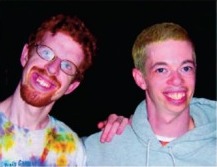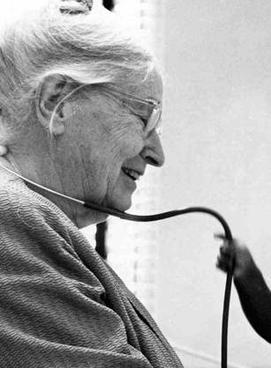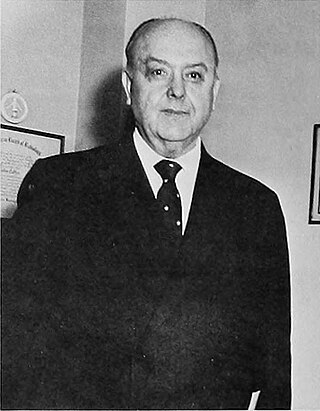Related Research Articles

Pediatrics is the branch of medicine that involves the medical care of infants, children, adolescents, and young adults. In the United Kingdom, paediatrics covers many of their youth until the age of 18. The American Academy of Pediatrics recommends people seek pediatric care through the age of 21, but some pediatric subspecialists continue to care for adults up to 25. Worldwide age limits of pediatrics have been trending upward year after year. A medical doctor who specializes in this area is known as a pediatrician, or paediatrician. The word pediatrics and its cognates mean "healer of children," derived from the two Greek words: παῖς and ἰατρός. Pediatricians work in clinics, research centers, universities, general hospitals and children's hospitals, including those who practice pediatric subspecialties.

Williams syndrome (WS), also Williams–Beuren syndrome (WBS), is a genetic disorder that affects many parts of the body. Facial features frequently include a broad forehead, underdeveloped chin, short nose, and full cheeks. Mild to moderate intellectual disability is observed in people with WS, with particular challenges with visual spatial tasks such as drawing. Verbal skills are relatively unaffected. Many people with WS have an outgoing personality, an openness to engaging with other people, and a happy disposition. Medical issues with teeth, heart problems, and periods of high blood calcium are common.

Shaken baby syndrome (SBS), also known as abusive head trauma (AHT), is the leading cause of fatal head injuries in children younger than two years. Diagnosing the syndrome has proved both challenging and contentious for medical professionals, in that objective witnesses to the initial trauma are generally unavailable. This is said to be particularly problematic when the trauma is deemed 'non accidental'. Some medical professionals propose that SBS is the result of respiratory abnormalities leading to hypoxia and swelling of the brain. The courtroom has become a forum for conflicting theories with which generally accepted medical literature has not been reconciled. Often there are no outwardly visible signs of trauma, despite the presence of severe internal brain and eye injury. Complications include seizures, visual impairment, cerebral palsy, cognitive impairment, and death.
Pediatric ophthalmology is a sub-speciality of ophthalmology concerned with eye diseases, visual development, and vision care in children.
Marshall Miller Parks was an American ophthalmologist known to many as "the father of pediatric ophthalmology".

Axenfeld–Rieger syndrome is a rare autosomal dominant disorder, which affects the development of the teeth, eyes, and abdominal region.
The red reflex refers to the reddish-orange reflection of light from the back of the eye, or fundus, observed when using an ophthalmoscope or retinoscope. The reflex relies on the transparency of optical media and reflects off the fundus back through media into the aperture of the ophthalmoscope. The red reflex is considered abnormal if there is any asymmetry between the eyes, dark spots, or white reflex (Leukocoria).
Henry S. Metz is an American pediatric ophthalmologist. He was the CEO of the Smith-Kettlewell Institute in San Francisco from 2003 to 2008. Much of his early research concerned eye movements and strabismus, including saccadic velocity measurements and use of botulinum toxin.
Gene Folk was an American ophthalmologist who specialized in the diagnosis and treatment of strabismus. A charter member of the American Association for Pediatric Ophthalmology and Strabismus, he later served as President of this organization. With Martin Urist, Folk helped found the "Chicago" school of strabismus, whose ideas competed with and stimulated those of Marshall M. Parks, Arthur Jampolsky, and other prominent strabismologists. During the 1950s and 1960s, Urist and Knapp's contributions led to a much improved understanding of so-called A and V "pattern" strabismus, where the amplitude of deviation varies in up- and downgaze.
Burt Kushner is an American pediatric ophthalmologist specializing in the diagnosis and treatment of strabismus. Kushner's contributions include demonstration of improved visual fields of patients following strabismus surgery, elucidation of torsional contribution to patients with diplopia, corticosteroid treatment of periocular capillary hemangioma, and novel hypotheses on the mechanism of "overacting" extraocular muscles.

Margaret Irving Handy (1889–1977) was a pioneering medical doctor who was one of the first to specialize in pediatric medicine. In 1945, she established the first mothers' milk bank at Delaware Hospital in Wilmington, Delaware.
Amin J. Barakat is a Lebanese-American physician known for the diagnosis Barakat syndrome.
Marilyn T. Miller was an American pediatric ophthalmologist specializing in the diagnosis and treatment of congenital eye diseases and strabismus. She held leadership positions in her field.
Barton Childs was an American pediatrician and geneticist. He was born in Chicago, Illinois, and graduated from Williams College in 1938. In 1942, he received his M.D. from Johns Hopkins University. Following military service in World War II, he returned to Johns Hopkins for a residency in pediatrics. After a fellowship at Boston Children's Hospital in Boston, he returned to Johns Hopkins University in 1949, where he remained until his retirement in 1981. He remained a professor emeritus in the Department of Pediatrics at The Johns Hopkins University School of Medicine until his death.
Elias I. Traboulsi is a physician in the fields of ophthalmic genetics and pediatric ophthalmology.
Ethylin Wang Jabs is a Chinese-American physician-scientist with expertise in medical genetics, pediatrics, and craniofacial biology. She is currently vice chair of the Department of Genetics and Genomic Sciences at the Icahn School of Medicine at Mount Sinai Medical Center. Jabs is also a professor in the departments of developmental and regenerative biology and pediatrics at Mount Sinai and an adjunct professor in pediatrics, medicine, and surgery at the Johns Hopkins School of Medicine. Her research and clinical practice have focused on development genetics and patients with birth defects.

John M. Opitz is a German-American medical geneticist and professor at the University of Utah School of Medicine. He is best known for rediscovering the concept of the developmental field in humans and for his detection and delineation of many genetic syndromes, several now known as the "Opitz syndromes" including Smith–Lemli–Opitz syndrome (SLOS), Opitz–Kaveggia syndrome (FGS1), Opitz G/BBB syndrome, Bohring–Opitz syndrome, and other autosomal and X-linked conditions. He is founder of the Wisconsin Clinical Genetics Center, the American Journal of Medical Genetics, and was a cofounder of the American College and American Board of Medical Genetics.
Terri L. Young is an American pediatric ophthalmologist.
Anil Kumar Mandal is an Indian ophthalmologist and a consultant at L. V. Prasad Eye Institute, Hyderabad. Known for his research on glaucoma, Mandal is an elected fellow of the National Academy of Medical Sciences. The Council of Scientific and Industrial Research, the apex agency of the Government of India for scientific research, awarded him the Shanti Swarup Bhatnagar Prize for Science and Technology, one of the highest Indian science awards, for his contributions to Medical Sciences in 2003.

John Patrick Caffey was an American pediatrician and radiologist who is often referred to as one of the founders of pediatric radiology. He was the first to describe shaken baby syndrome, infantile cortical hyperostosis, and Kenny-Caffey syndrome.
References
- 1 2 "The Marshall M. Parks Medal - American Association for Pediatric Ophthalmology and Strabismus". aapos.org. Retrieved 2021-05-26.